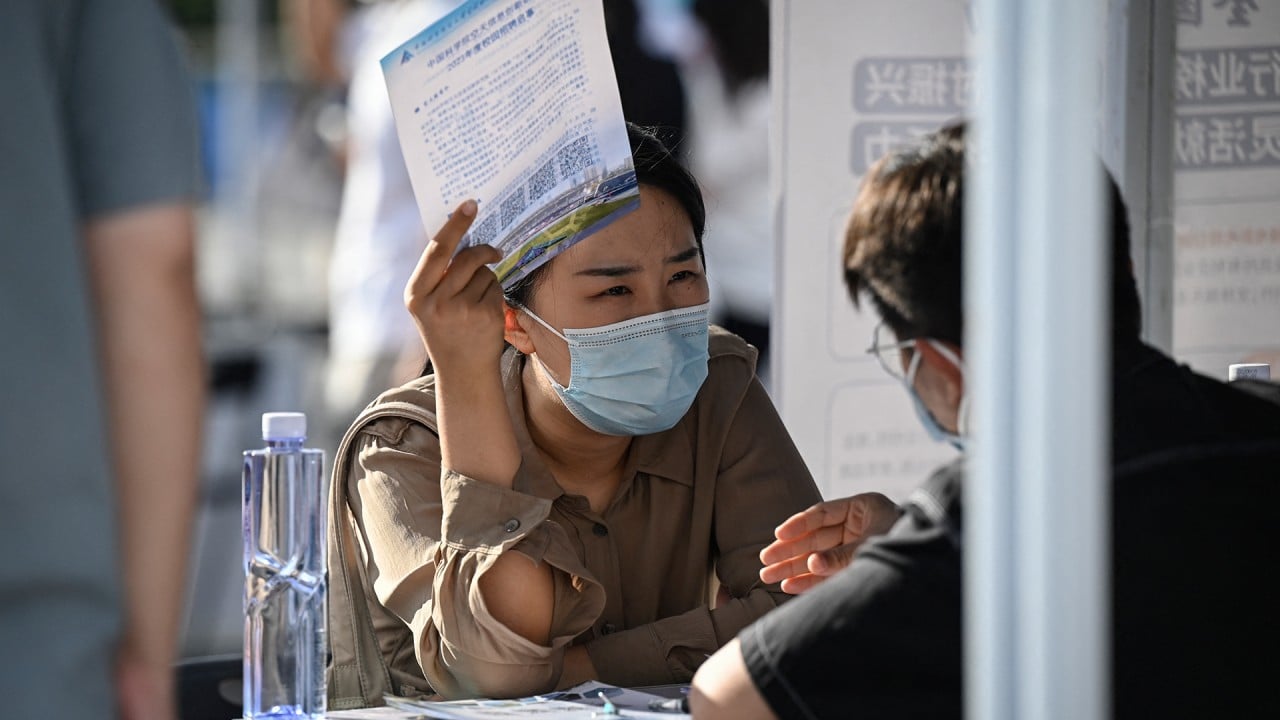It is also the first vocational school that provides help to foreign graduates to obtain work visas, the school added.
In September, the first batch of international students will arrive in Gwangju and take part in a Korean language training programme.
The students who complete the programme in March will then be able to choose to take a two-year employment-oriented course in one of five major subjects.
On top of practical Korean language studies, the other courses – industrial engineering, senior welfare, beauty and artificial intelligence (AI) future automotive engineering – are seen as the industries in which South Korea faces the most critical labour shortages.
The AI future automotive engineering programme would train students to be employed in electric vehicle maintenance, with the education and training customised for employment by Korean businesses.
Hyundai Samho, one of the world’s largest shipbuilding companies, will also work with the school to develop an employment-linked curriculum reflecting practical knowledge and skills.
Out of around 10,000 workers at Hyundai Samho, about 3,500 are foreign workers, including welders, electricians and plumbers.
Why more of China’s graduates are seeking technical skills training to get work
Why more of China’s graduates are seeking technical skills training to get work
Some 16 per cent of around 93,000 workers in South Korea’s shipbuilding industry are already foreign labourers.
And according to the Ministry of Trade, Industry and Energy, most of the new hires in South Korea’s shipbuilding industry are from overseas.
During the first three quarters of last year, new hires in the shipbuilding industry numbered 14,359, with foreign workers accounting for 86 per cent.
Seoyeong University recently signed a memorandum of understanding with a group of 85 in-house companies under Hyundai Samho, creating a pathway for students to seek employment once they graduate.
“Graduates who possess proficiency in the Korean language and adaptation skills to Korean society will be able to obtain an E-7 employment visa without the need for practical skills verification,” said Joo Seung-wan, the dean of the College of International Education at Seoyeong University.
South Korea is grappling with a severe labour shortage amid the backdrop of a shrinking birth rate and a rapidly ageing population.
According to the Bank of Korea, South Korea is expected to face a shortfall of 1.55 million carers for older adults, the sick and children by 2042 due to an ageing society.
Foreign labourers are expected to make up 8.4 per cent of the working-age population this year, more than double from 4 per cent in 2022, according to Statistics Korea.
It has great prospects; the two countries are complementary
And foreign workers could account for more than 10 per cent, or 2.94 million, of South Korea’s workforce by 2042, the stats agency added.
“[The programme] solves the labour shortage problem in South Korea and could ease China’s high youth unemployment by exporting labour services,” said Zhang Huizhi, a professor of Northeast Asian studies at Jilin University in northwest China.
“It has great prospects; the two countries are complementary.”
Chinese schools should also partner with companies to ensure that the students are employable, she said, adding that companies and schools need to be more motivated and take more initiative.
Many people would be willing to go [to South Korea], the government would not prevent it, but if China wants to retain talent, it has to be more competitive
“Many people would be willing to go [to South Korea], the government would not prevent it, but if China wants to retain talent, it has to be more competitive,” Zhang added.
Chinese students will also be incentivised as foreign students receive a 30 per cent scholarship, making the annual cost of between 60,000 yuan (US$8,282) and 70,000 yuan not much more than obtaining an associate degree at home.
‘I don’t want to lie flat’: China’s nervy jobseekers are resigned to their fate
‘I don’t want to lie flat’: China’s nervy jobseekers are resigned to their fate
“With this programme, employment is ensured, and students can get a monthly salary of around 20,000 Chinese yuan upon graduation, as well as an overseas degree. This is much more than what they could get at a factory job in China,” said Zhou Yonggang, director at Seoyeong University’s China office, who is in charge of its admissions in China.
Since March, Seoyeong University has visited the Chinese cities of Weihai, Qingdao, Shenyang and Jinan and formed partnerships with four vocational high schools.
In 2023, South Korea had 133 junior colleges – those with a two or three-year curriculum for technical training courses – according to the Ministry of Education.
About half admit international students, but without any guarantee for employment, with the employment rate for foreign students no more than 10 per cent.
Most of the foreign employees suffer language barriers and the lack of background knowledge
Seoyeong is among only five schools that have similar partnerships with companies that ensure employment for its students.
Through partnership with vocational colleges, companies are able to secure a stable source of foreign workers equipped with basic communicative competence and job-related skills, said Kim Byeong-su, managing director of Hyundai Samho’s 85 in-house companies.
Kim said the companies are able to save time and effort and expect more productivity through “the exemplary employment-linked model”.
“Most foreign workers are thrown into workplaces without prior training, such as Korean language, culture learning courses and vocational training,” he said.
“In fact, most of the foreign employees suffer language barriers and the lack of background knowledge and skills related to their duties, hindering efficient productivity.”


